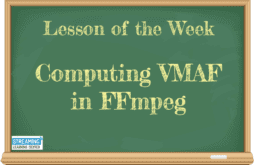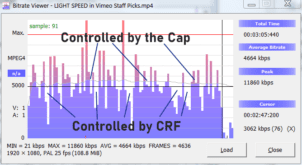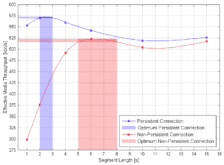For obvious reasons, a lot more of us will be presenting online over the next few months than ever before. This short video provides some simple techniques you can use to look your best. These images are from a book I published back in 2015 entitled Mastering Webcam and Smartphone Video: How to Look and Sound Great in Webinars and …
Read More »TimeLine Layout
March, 2020
-
9 March
Lesson of the Week: Computing VMAF with FFmpeg
This lesson teaches you how to compute VMAF with FFmpeg. It includes a download link to a specially compiled version of FFmpeg that can compute VMAF and to a zipped file that contains the batch files and input/output files shown in the lesson. I’m adding it as a lesson to my course Computing and Using Video Quality Metrics. If you’re …
Read More »
February, 2020
-
19 February
Lesson of the Week: CMAF Proof of Concept
The Common Media Application Format (CMAF) is supposed to be the Holy Grail of streaming; one set of files that you can deliver to multiple output points. How well does it work today? This 3:47 video shows you. I started by creating CMAF output in AWS Elemental MediaConvert. Why? Because they supply useful templates, have an easy to use UI, …
Read More » -
3 February
Choosing the Optimal CRF Value for Capped CRF Encoding
In a blog full of wonky compression articles, this could be the wonkiest article of all. If you’re not using capped CRF encoding, or considering the same, it’s almost certainly not of interest. If you are using capped CRF encoding (for constant rate factor), however, you almost certainly will find it interesting and perhaps even illuminating. A quick background note. …
Read More »
January, 2020
-
23 January
The Ten Most Popular Articles from 2019
It’s always good to review which articles readers found valuable over the past year to help focus on producing similar content in the future. By publishing the top ten, hopefully, those reading this article will see some articles they might find useful. So, without further ado, here were the top ten articles from the Streaming Learning Center blog in 2019. …
Read More » -
21 January
Using a Simple Wildcard Command in FFmpeg
Author’s note: This is a very simple automation technique for FFmpeg beginners. I’m sure there are much more efficient ways to script this project, but this represents my baby steps in FFmpeg automation. I recently started a consulting project that involved encoding multiple files to multiple CRF values to create rate-distortion curves and BD-Rate computations. I’m testing three codecs with …
Read More » -
17 January
Balance of Power Shifts Among HEVC Patent Pools
Nine members of the MPEG LA HEVC patent pool are leaving the pool and now will be included within the HEVC Advance HEVC pool. This changes the balance of power between these two pools, though licensees who signed with the MPEG LA pool before the departures will continue to have coverage for these patents going forward. The MPEG LA pool, which has more …
Read More » -
2 January
Another Five-Star Review of Video Encoding by the Numbers
Any book author will tell you that while the revenue is nice, hearing from readers that find your book useful is even better. In this regard, I’m excited to blog about the following new five-star review of my book Encoding by the Numbers. What I tried to do in Encoding by the Numbers was to tie all configuration decisions to …
Read More »
December, 2019
-
23 December
Open and Closed GOPs – All You Need to Know
This article defines open and closed GOPs, identifies why closed GOPs are better, and details how to produce closed GOPs in FFmpeg with x264 and x265. The level of testing and analysis detailed here is consistent with the instruction in my book, Learn to Produce Videos with FFmpeg In 30 Minutes or Less ($34.95), and my course, FFmpeg for Adaptive …
Read More »
 Streaming Learning Center Where Streaming Professionals Learn to Excel
Streaming Learning Center Where Streaming Professionals Learn to Excel










